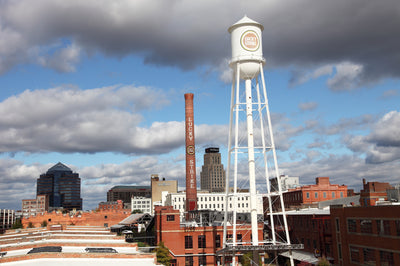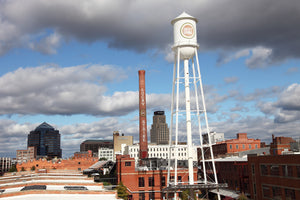Emma Schultz, M.S. | Scientific Contributor
**Updated August 6, 2019 to include current data
For our Garland water report, we aggregated water quality test data from Garland Water Utilities, the U.S. Environmental Protection Agency (EPA), as well as from samples that we collect and analyze. We cross reference these data with toxicity studies in the scientific and medical literature, and look at upcoming regulatory changes. The water filters that we sell in Garland are optimized with these issues in mind.
Source Of Garland Drinking Water
Garland’s drinking water is surface water-sourced, and is purchased from the North Texas Municipal Water District (NTMWD). Water is pumped from Lavon Lake, Jim Chapman Lake, Lake Tawakoni, Lake Texoma, and the East Fork Raw Water Supply Project. Water is treated at one of the NTMWD’s six water treatment plants before being distributed to the City of Garland. Water may be stored in one of eight ground storage tanks or three elevated storage tanks.
Lead In Garland Drinking Water
Lead enters into tap water through old lead service pipes and lead-containing plumbing. When corrosion control measures fail (such as recently seen in Flint, Michigan), lead leaches into drinking water and can reach hazardous levels. A recent water quality analysis for Garland revealed a 90th percentile concentration of 3.88 parts per billion. While the Action Level is 15 parts per billion, both the EPA, CDC, and the American Academy of Pediatrics all recognize that there is no such thing as a safe level of lead for children. In addition, federal regulations cannot take into account levels measured at an individual tap.
Chromium 6 In Garland Drinking Water
Chromium 6 is a highly toxic metal that, although monitored, is not regulated by the EPA. Garland’s tap water recently averaged 91.2 parts per trillion for chromium 6. These average levels are over 4 times higher than the concentration determined to have a negligible impact on cancer risk.
Disinfection Byproducts (DBPs) In Garland Drinking Water
DBPs are a category of emerging contaminants that form when chlorine-based disinfectants react with naturally-occurring organic matter. While these chemicals are not well regulated, the EPA has stated they have an association with an increased risk of bladder cancer, as well as kidney, liver, and central nervous system problems. EPA regulates two categories of DBPs: Total Trihalomethanes (TTHMS) and Haloacetic Acids 5 (HAA5). The average concentration of TTHMs is 36 parts per billion, and 25 parts per billion for HAA5. For a bit of perspective, the outdated Maximum Contaminant Level for TTHMs is 80 parts per billion and 60 parts per billion for HAA5.
Use Of Chloramine In Garland Tap Water
While most cities use chlorine as their primary disinfectant, the City of Garland’s water is disinfected with chloramine, produced by mixing chlorine and ammonia. Chloramine is primarily responsible for what customers report as the “bad taste” of tap water, and unlike chlorine this bad taste will not fade if a container of water is left in the fridge overnight. Most one-size-fits-all water filters use filtration media that doesn’t adequately remove chloramine, but the filters that Hydroviv builds for Garland use special filtration media that is purpose-built to remove chloramine as well.
In 2016, the running annual average for chloramines was 2.93 parts per million and the upper detected range was 4.2 parts per million, which is over the Maximum Residual Disinfectant Level (MRDL) of 4.0 parts per million. It is important to note that while this is above the MRDL, it is not a violation.
Still Have Questions About Garland’s Tap Water?
Hydroviv is a water filtration company that uses water quality data to optimize water filters for each city’s water. The chemicals that we list above are what we consider to be “points of emphasis” so we can build the best water filter for Garland tap water, but all of our water filters provide broad protection against other contaminants commonly found in drinking water (e.g. VOCs, heavy metals [including lead], pharmaceuticals, solvents, pesticides, mercury).
If you’re interested in learning more about water filters that have been optimized for Garland tap water, feel free to visit www.hydroviv.com, reach out by email (hello@hydroviv.com) or through our live chat. We also frequently post water-related news on Twitter or Facebook.
Please Share This City of Garland Water Quality Article On Social Media With Anyone You Think Would Benefit From The Information!
Recommended Articles For You
What Do I Need To Know About Lead Contamination And Lead Poisoning?
How Do I Filter Chromium 6 From Drinking Water?
What Do I Need To Know About Disinfection Byproducts?
Are Whole House Filters A Waste Of Money?



